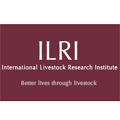 On 4 Nov 2012, an ILRI delegation of 28 visited the village of Araipura, in the Karnal District in the Indian state of Haryana, where they held discussions with dairy farm families. ILRI’s management team and board of trustees also visited the main campus at National Dairy Research Institute, at Karnal. These field visits preceded a meeting of ILRI’s board and management in New Delhi on 5–6 Nov, followed by an ILRI-ICAR Partnership Dialogue on 7 Nov 2012.
On 4 Nov 2012, an ILRI delegation of 28 visited the village of Araipura, in the Karnal District in the Indian state of Haryana, where they held discussions with dairy farm families. ILRI’s management team and board of trustees also visited the main campus at National Dairy Research Institute, at Karnal. These field visits preceded a meeting of ILRI’s board and management in New Delhi on 5–6 Nov, followed by an ILRI-ICAR Partnership Dialogue on 7 Nov 2012.
A partnership dialogue organized by the International Livestock Research Institute (ILRI) and the Indian Council of Agricultural Research (ICAR) on livestock, research and development was held yesterday (7 Nov 2012) in New Delhi.

India’s booming livestock sector
With 485 million livestock and 489 million poultry, India ranks first in global livestock population. Livestock keeping has always been an integral part of the socio-economic and cultural fabric of rural India. In recent years, India’s livestock sector has been booming. India has become the leading exporter of buffalo beef and it has turned from a milk-deficient nation into the world’s largest dairy producer, accounting for close to 17% of global production.
While the contribution of agriculture to the country’s GDP continues to fall with industrialization, the contribution of the livestock sector to India’s agricultural output only continues to increase. Livestock now contribute 28% of the output of the agricultural sector and the sub-sector is growing at a rate of 4.3% a year while that for the agricultural sector as a whole is growing at just 2.8% a year. Last year, India’s livestock sector output value was estimated to be over USD40 billion—more than all grains combined.
With over 80% of livestock production being carried out by small-scale and marginalized farmers, the benefits livestock generate for India’s poor are enormous and diverse. But while livestock are a prime force in this country’s economy and the well-being of hundreds of millions of its people, the sector has not yet been given the level of attention it warrants.
Livestock are both central to India’s development and a threat to it
Environmental impacts: While millions of people in India are benefiting from better incomes and nutrition due to livestock, there are great environmental and public health risks associated with the country’s livestock sector. For starters, India’s projected spike in demand for milk and meat—176% by 2025—will have tremendous impacts on the environment; already, for example, global livestock production accounts for up to one-fifth of human-generated greenhouse gas emissions.
Zoonotic diseases: And India’s fast-growing human population and resulting increasing animal-human interactions, combined with changing environmental conditions and inadequate sanitation and regulation, have made India one of the world’s top hotspots for livestock diseases, including zoonotic diseases—those that pass from animals to humans and which make up 75% of all human diseases. Controlling zoonoses is particularly important in developing countries, where the absolute burden of these diseases is up to 130 times greater than in rich countries. An ILRI global report released in July of this year, Mapping of Poverty and Likely Zoonoses Hotspots, ranked India near the top of the list globally for the highest burden of zoonoses—in terms of both absolute numbers of those infected with zoonoses and the level of intensity of the zoonoses infections.
Classical swine fever, a highly contagious pig disease, poses a threat to rural farmers in India’s northeastern states of Assam, Mizoram and Nagaland—80% of whom keep pigs and 46.6% of whom identify pig farming as the most promising source of income. ILRI’s research has shown that nearly USD40 million in income is lost to the disease annually in these three states. As a result of targeted advocacy at the national ministry level, the government is allocating new funds for dealing with classical swine fever.
India’s Operation Flood, which started in the 1970s, has helped to increase national milk consumption by 30% over the last two decades. However, 80% of all sold milk is still marketed by informal traders, often perceived as unreliable, which discourages the investment into more productive animals and better inputs. What should India be doing to reach those farmers still living on the margins and who have yet to reap the benefits of India’s milk boom?
Livestock ‘goods’ and ‘bads’: The roles of livestock globally–both positive and the negative—must be better understood, particularly why researchers and policymakers must draw a distinction between the developed and developing world when it comes to the future of livestock. The current public debate on livestock is dominated by concerns of the developed world on the negative environmental and health impacts of livestock. Experts at ILRI argue that this one-sided focus can leave the poor as victims of generalizations and justify the neglect of research needed to improve the sector’s environmental performance and management of disease risks, especially in parts of the world where the benefits of livestock, which provide most poor household’s with livelihoods, regular incomes and good nutrition, outweigh its problems.
November 8, 2012 - ILRI


